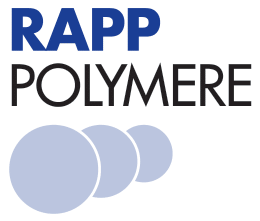ɑ-Methoxy-ω-Squaric Acid Ester Amido PEG
ɑ-Methoxy-ω-SQA Ester PEG
€ 230,00*
122000-50.500MG
Product information
PEGs with an active ester functional group at one end allow for selective and covalent attachment to other molecules with complementary functional groups, such as primary amines on proteins, peptides, or other molecules. To a lesser extent they are reactive towards thiols or hydroxyls (to form thioesters or esters). Squaric Acid Ester Amido PEGs are a novel class of reactive and chemoselective PEG crosslinking reagents. The squaric acid PEGs are chemoselective towards the amino groups of Lysin in protein PEGylation whereas the guanidine function of Arginine, the hydroxyl group of Serine and the imidazole function of Histidine are not affected. Compared to other active esters, these PEGs are remarkably stable in aqueous media and not easily hydrolyzed.
Literature
L 59 Squaric Acid Polyethylene Glycols
- Dingels, C.; Wurm, F.; Wagner, M.; Klok, H.-A.; Frey, H. Squaric Acid Mediated Chemoselective PEGylation of Proteins: Reactivity of Single-Step-Activated α-Amino Poly(Ethylene Glycol)s. Chemistry 2012, 18 (52), 16828-16835. doi: 10.1002/chem.201200182.
- Yang, Y.; He, H.-J.; Chang, H.; Yu, Y.; Yang, M.-B.; He, Y.; Fan, Z.-C.; Iyer, S. S.; Yu, P. Multivalent Oleanolic Acid Human Serum Albumin Conjugate as Nonglycosylated Neomucin for Influenza Virus Capture and Entry Inhibition. Eur. J. Med. Chem. 2018, 143, 1723-1731. doi: 10.1016/j.ejmech.2017.10.070.
- Westerlind, U.; Hobel, A.; Gaidzik, N.; Schmitt, E.; Kunz, H. Synthetic Vaccines Consisting of Tumor-Associated MUC1 Glycopeptide Antigens and a T-Cell Epitope for the Induction of a Highly Specific Humoral Immune Response. Angew. Chem. Int. Ed Engl. 2008, 47 (39), 7551-7556. doi: 10.1002/anie.200802102.
- Westerlind, U.; Hobel, A.; Gaidzig, N.; Schmitt, E.; Kunz, H. Synthetische Vakzine aus tumorassoziierten MUC1-Glycopeptidantigenen und einem T-Zellepitop für die Induzierung einer hochspezifischen humoralen Immunantwort. Angew. Chem. 2008, 120 (39), 7662-7667. doi: 10.1002/ange.200802102.

